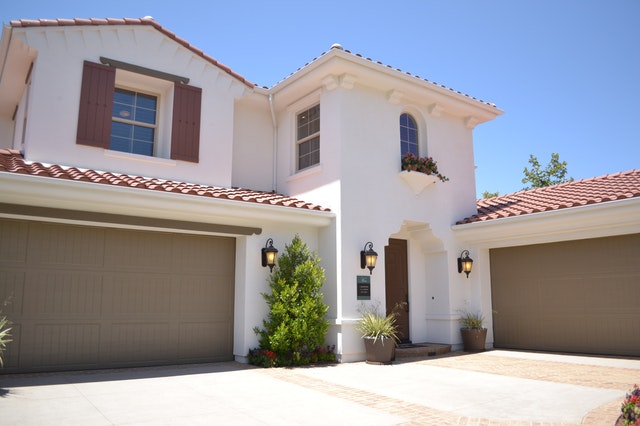 To refinance or not to refinance, that is the question. How do you know when it is an appropriate time to refinance? Many factors influence this decision, besides just the cost of the mortgage loan. Here is a checklist to follow when considering a refinancing opportunity.
To refinance or not to refinance, that is the question. How do you know when it is an appropriate time to refinance? Many factors influence this decision, besides just the cost of the mortgage loan. Here is a checklist to follow when considering a refinancing opportunity.
Check Your Credit Score
Refinancing is similar to getting the original home loan. The lenders will run a credit check and verify your current income. Your total debt level and your credit history are both important. If you have some “dings” on your credit record, you may be better off staying with the existing mortgage rather than attempting refinancing.
The opposite is also true. If your credit score has significantly improved since the time when you took out a mortgage, you may benefit from refinancing.
Be aware that every time you ask a lender for loan approval, and the lender runs a credit check, the credit inquiry will lower your credit score. It is highly advisable to check your credit history first before applying for any mortgage financing. If there is anything that is not correct in your credit file, then dispute the bad information to improve your credit score.
To get the best rates on mortgage financing, aim for a credit score of above 740, with a debt-to-income ratio of below 75%. The rule of thumb is that for every 20 points that your credit score goes up you will benefit from lower rates.
Private Mortgage Insurance
Another consideration on the checklist is whether you pay private mortgage insurance (PMI). PMI is usually a requirement for a low down payment loan. If the equity value that you have in the home increased significantly since the time you bought it, the PMI may no longer be necessary. Sometimes a lender will accept a new appraisal of the home and recalculate the PMI requirements. Ask your lender if they allow this. If they do, you may be able to get rid of the PMI without refinancing.
If a lender will not remove the PMI requirement, and the equity value of the home is substantially higher, then refinancing may be beneficial, if the new loan does not require PMI.
Closing Costs
Covering the closing costs is a mathematical calculation. The amount saved on the monthly mortgage payment needs to be larger than the closing costs on a refinancing loan. The amount of savings depends on how long you plan to own the property. For example, if the closing costs are $3,600 and your monthly saving on the mortgage is $200, the break-even, where you save more than the closing costs, is 18 months later. You should plan to own the property for at least 18 months for this refinance to make financial sense.
Cash Out
Sometimes the benefits of refinancing also include the possibility of taking cash out from the refinancing loan to use for other purposes. If this is the case, consider the savings on the cost of those funds if borrowed elsewhere.
Summary
Those are the things to think about when considering refinancing. Work with a qualified real mortgage broker to get advice if you are not certain about the best thing to do.
If you are in the market for a new home or interested in listing your current property, be sure to contact your trusted real estate professional.
 In the overwhelming majority of the 50 largest cities across the U.S., monthly rent is more than the mortgage payment for single-family homes. In several cases, much more.
In the overwhelming majority of the 50 largest cities across the U.S., monthly rent is more than the mortgage payment for single-family homes. In several cases, much more.  The Realtor.com study looked at 593 counties across the country. As compared to the fourth quarter of 2018, the average monthly cost of renting a home increased 4%, up from $1,254, while the average monthly cost of homeownership actually declined 1%, falling from $1,658. These numbers represent exactly 30% of a homeowner’s gross income and 25% for renters, based on median household income.
The Realtor.com study looked at 593 counties across the country. As compared to the fourth quarter of 2018, the average monthly cost of renting a home increased 4%, up from $1,254, while the average monthly cost of homeownership actually declined 1%, falling from $1,658. These numbers represent exactly 30% of a homeowner’s gross income and 25% for renters, based on median household income.  The National Association of Home Builders reported a housing market index reading of 74 in February; the index reading was one point lower than for January and was only two points below the highest reading of 76 reported in December. Readings over 50 indicate that most builders consider housing market conditions to be positive.
The National Association of Home Builders reported a housing market index reading of 74 in February; the index reading was one point lower than for January and was only two points below the highest reading of 76 reported in December. Readings over 50 indicate that most builders consider housing market conditions to be positive. The Federal Open Market Committee of the Federal Reserve issued its scheduled post-meeting statement Wednesday. Policymakers unanimously decided to leave the target federal funds rate range unchanged at 1.50 to 1.75 percent.
The Federal Open Market Committee of the Federal Reserve issued its scheduled post-meeting statement Wednesday. Policymakers unanimously decided to leave the target federal funds rate range unchanged at 1.50 to 1.75 percent. Case-Shiller Home Price Indices reported that national growth of home prices rose by 0.30 percent in November. Analysts said that slim inventories of available homes boosted home prices. Whether or not home price growth continues gaining speed depends on variables including supplies of homes for sale, affordability and home-buyer confidence in the economy.
Case-Shiller Home Price Indices reported that national growth of home prices rose by 0.30 percent in November. Analysts said that slim inventories of available homes boosted home prices. Whether or not home price growth continues gaining speed depends on variables including supplies of homes for sale, affordability and home-buyer confidence in the economy.